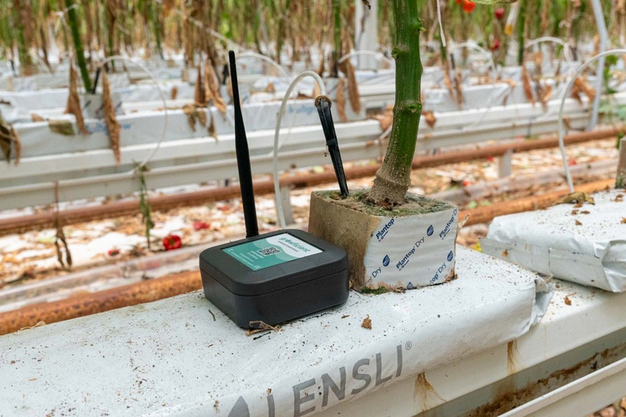The bell pepper cultivation currently struggles with many root problems. More and more growers are experiencing large-scale plant loss or substandard production. Looking for a solution, several growers have had positive experiences with organic substrates. But how do you make the switch? Dennis Steentjes of Growficient talks about the importance of insight when growing in a different substrate.
Plants that wilt on a large scale or produce far too little: more and more Dutch bell pepper growers have to deal with it. Although the exact cause is still undetermined, organic substrate problems appear less substantial. Dennis explains, "Traditionally, rockwool is a fine substrate: it is easy to control, and you have a lot of grip. That's why it has been widely used in the Netherlands for over 20 years."
Yet bell pepper growers are currently looking for an alternative. They find it in organic substrates, such as coco, and other mixtures with peat. Dennis continues: "There have been many trials with different substrates at large bell pepper growers over the past year. These showed a lot fewer problems in organic substrate. This has caused bell pepper growers to look at alternatives en masse."

Learning to grow again
However, switching to another substrate is not a decision you take lightly. Dennis: "Everything you have learned as a grower, about growing on rockwool doesn't always apply to an organic substrate. The way the substrate holds water, how water flows through the substrate, how the plant responds to the available water: most of the steering guides and targets you had are different. This means the irrigation strategy has to be re-examined as well."
One factor that complicates determining this strategy is that the visible part of the bell pepper plant does not always say anything about the condition of the root system and the strength of the plant. Dennis continues: "In general, plants grow easier on organic substrates. However, the fact that a plant grows well does not guarantee it will also produce optimally. To achieve maximum production, you must occasionally push the limit of what the plant can handle. This is very labor-intensive and risky without proper monitoring such as sensors and a dashboard. So it is important to gain insight into what is happening below the surface."
The difference in substrate types is big
Sensors are essential to gain insight into the condition of the root system and plant. Dennis: "Sensors tell exactly how much water the substrate holds and how much the plants absorb. This can differ considerably per type of substrate. A good example is Lensi substrate: this substrate behaves similarly to rockwool in terms of total water content, but it is more difficult for the plant to uptake this water. If you irrigate in the same way, you can create stress on the plant, which harms the production."
Dennis: "Another good example is coco. Especially in coarse coco, the irrigation water drains away a lot easier. So, you have to give smaller shots in faster succession to maintain your water content balance. In this case, if you irrigate based on your old drain or radiation guidelines, you will quickly underwater the plant, and it will lose strength and production. Therefore, you must gain insight into the water uptake and respond to the plant's actual needs. This prevents, in return, your plant will get too wet in the evening after an unexpectedly dark day."
To achieve maximum production, it is also important that the data provided by sensors is reliable. Especially when you're switching to a substrate you are inexperienced with. The sensors that work in rockwool do not always work in organic substrates. Dennis: "To be sure your data is correct; you need sensors that work in your new substrate as well. Growficient has developed a sensor technology that works in all types of substrates. Several studies have shown that our data is just as reliable in rockwool as in organic mats."

Maximum insight
With the insight provided by the sensors, Growficient helps you limit the risks of switching to a new substrate. Dennis: "In our Growboard you have a direct overview of how your plants are doing, including data about the water content and dryback percentage (both during the day and overnight). You can also set up notifications when a value is above or below a preset threshold. Customers who use our sensors experience this as extra insurance to prevent mistakes."
With good insight alone, however, you're not there yet; you also need to know how to interpret the data and manage it. For that, you can contact the Grower Success Managers of Growficient. Dennis concludes: "Our Grower Success Managers have guided several growers with the transition to a new substrate. They are also regularly involved in research into new substrates for various crops. They are happy to share that knowledge. In this way, we help growers quickly determine a new irrigation strategy that fits the substrate and reduces risks."
For more information:
Growficient
[email protected]
www.growficient.com
